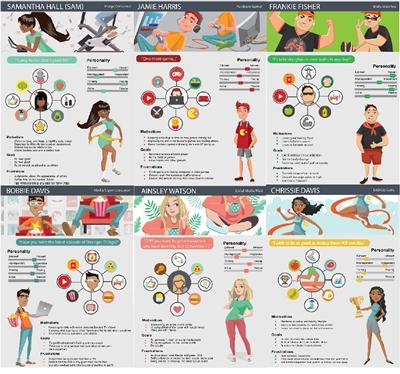
Project Lead
Dr Kathryn Woods-Townsend, LifeLab Programme Manager, Southampton Education School, Faculty of Social Sciences K.Woods-Townsend@soton.ac.uk
Project team: David Farrell & Andrew Reid (Serious Games - Glasgow Calledonian University), Mary Barker and Hazel Inskip (UoS Medicine).
Purpose and audience
As part of a larger programme-grant funded by NIHR, we have been working with game designers and young people to make our own smartphone game to help teenagers exercise more and eat right.
We know that the LifeLab experience can motivate teenagers to change their behaviours, but further tailored support is needed once they leave LifeLab and return to their schools, communities and families. Inspired by Pokémon Go, Snapchat, and fitness apps, we felt that a game approach would be ideal for engaging teenagers. Critical to the project’s success would be input from the teenagers themselves into the design of the game, which is where this seed-funded project came in.
Approach taken
We held a series of ‘idea jams’ in which teenagers could contribute their thoughts and ideas at different stages during the development process. This enabled the teenage voice to be heard and also allowed them to engage directly with research which has implications for their futures.
We held six successful ‘idea jams’ in a variety of locations (at LifeLab, local leisure centres and a local school) with a varied audience (totalling 79 participants drawn from the general school population, general public, plus direct invitations). The jams were used to elicit multiple types of user feedback. Initially, the students were asked to design characters that represent (1) who they are now and (2) who they would like to be in the future. These drawings and descriptions were analysed to help the game designers understand the target audience for the game and, in particular, to inform the creation of user ‘personas’.
Subsequent idea jams collected feedback on ideas for content within the final game. The teenagers first played a prototype, then after giving feedback, designed variations on the stories and actions in the game. These themes and story ideas were subsequently used to generate further game content to engage and entertain the users.
The game jams were also used to test the feasibility of incorporating GPS-based elements into a game. The game design team ‘placed’ a series of objects which the students had to answer clues about and use GPS tracking to locate. This was very useful as several features were identified as being critical, a key example being the ability to safely ‘place’ objects.
Partnerships
The project was a collaboration with the games design team from Serious Games at Glasgow Calledonian University. We have established an energising and productive partnership with potential for further collaborative work.

Achievements/outcomes
Initially we held six themed idea jams which generated outputs specific to the particular themes:
- Creating a series of personas
- User-data for a GPS based mobile game
- Input as to what elements of a game are appealing to teenagers
Due to logistical difficulties, we were unable, at that point in time, to run a jam to evaluate how best to engage parents in supporting their teenagers (a planned fourth theme). Subsequently however this has taken place: we got a group of students together to ask their ideas about the game, what it should do, how parents should be involved. Then their parents came and we ran a similar activity with parents and their children – getting them to input into the design of the parent app.
The opportunity for the teenagers to have their ideas and thoughts heard and translated into the final game was the driving force behind the jams. The richness of data generated for the personas and input into the game design has been invaluable and has directly influenced the game design and artwork (link to some of the images from report).
This approach was a very new experience for the LifeLab team, enabling close collaboration between researchers, teachers and the game design team. The output – the game - is very different to anything we have produced before and we are excited to pilot its use.
This work was part of a larger project funded by the NIHR and demonstrated real value for money. The complementary PER Development Funding was crucial in enabling the voice of the end-user to be heard throughout development of the game, which would not otherwise have happened.
Evaluation
We used a logic model to consider how we would evaluate the effectiveness of the project; this proved very useful in keeping us on track and focussed on the outputs we were looking for. It also made the evaluation relatively straight forward in showing where we had achieved what we set out to do, and also the areas for improvement.
Challenges and Lessons Learned
The opportunity to collaborate closely with the game design team was invaluable. It has been inspiring to see how they work in combining the ideas from the teenagers and evidence from the researchers to translate them into an activity.
Our message for other researchers considering this type of project is to capitalise on interactions with people outside of your normal field. We wouldn’t be able to replicate this game design ourselves, but the partnership we have established will continue to be productive. As researchers, we have to explore different methods and tools for engaging with the public and giving them an opportunity to have their voices heard.
Legacy
Prototypes of the different game elements (‘Food Tinder’, ‘Food Challenges’, ‘Get out and move challenges’ and ‘Undercover youtuber’) have been trialed with teenagers in Glasgow with great success and a second iteration has been user-tested with LifeLab students followed by a pilot trial during 2018/19.
Due to NIHR funding this project will continue to a full trial planned for 2020.